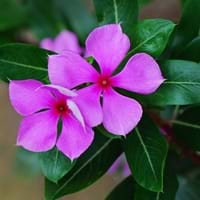Life Span
Perennial
Perennial
Type
Fruit
Tender Perennial
Origin
Caribbean, South America
Madagascar
Types
Pinks Mammoth, African Pride, Late Gold, Geffner, Hilary White
Purple vinca, Vinca, cherry red, strawberry color
Habitat
Warm and moist climatic conditions
Subtropical climates, Tropical regions
USDA Hardiness Zone
10-13
9-15
Sunset Zone
Not Available
A1, A2, A3, H1, H2, 1a, 1b, 2a, 2b, 3a, 3b, 4, 5, 6, 7, 8, 9, 10, 11, 12, 13, 14, 15, 16, 17, 18, 19, 20, 21, 22, 23, 24
Habit
Upright/Erect
Clump-Forming
Flower Color
Yellow green
Pink, Magenta, Rose
Flower Color Modifier
Bicolor
Bicolor
Fruit Color
Light Green, Sea Green
Not Available
Leaf Color in Spring
Light Green
Dark Green
Leaf Color in Summer
Light Green
Dark Green
Leaf Color in Fall
Light Green
Dark Green
Leaf Color in Winter
Light Green
Dark Green
Leaf Shape
oblong or narrow-lanceolate
Oval
Plant Season
Summer
Spring, Summer, Fall, Winter
Sunlight
Full Sun, Partial Sun
Full Sun, Partial Sun
Type of Soil
Loam, Sand
Loam, Sand
The pH of Soil
Acidic, Neutral, Alkaline
Neutral, Alkaline
Soil Drainage
Well drained
Well drained
Bloom Time
Early Summer, Summer
Indeterminate
Tolerances
Drought
Pollution, Drought, Salt
Where to Plant?
Container
Container, Ground, Pot
How to Plant?
Seedlings
Seedlings, Stem Planting, Transplanting
Plant Maintenance
Medium
Medium
Watering Requirements
Do Not over Water, Does not require regular watering
Keep ground moist, Needs 2-3 times watering per week, Requires watering in the growing season, Water Deeply
In Summer
Lots of watering
Lots of watering
In Spring
Moderate
Moderate
In Winter
Average Water
Average Water
Soil pH
Acidic, Neutral, Alkaline
Neutral, Alkaline
Soil Type
Loam, Sand
Loam, Sand
Soil Drainage Capacity
Well drained
Well drained
Sun Exposure
Full Sun, Partial Sun
Full Sun, Partial Sun
Pruning
Prune young trees into an open vase shape
Prune ocassionally
Fertilizers
Nitrogen
All-Purpose Liquid Fertilizer
Pests and Diseases
Anthracnose, Diplodia rot, Leaf spot
Botrytis Blight, Canker, Crown rot, Pythium rot, Root rot
Plant Tolerance
Drought
Drought
Flowers
Insignificant
Showy
Flower Petal Number
Single
Single
Foliage Texture
Medium
Medium
Foliage Sheen
Matte
Glossy
Attracts
Fruit Bats
Butterflies
Allergy
Oral Allergy
Intestinal gas, Nausea, Vomiting
Aesthetic Uses
Not Used For Aesthetic Purpose
Beautification, Showy Purposes
Beauty Benefits
Promotes Healthy Hair, Promotes healthy skin
Not Available
Environmental Uses
Air purification
Air purification
Medicinal Uses
Diabetes, Diarrhea
Chest pain, High blood pressure, Inflammation, Sore throat, Tooth ache, Wounds
Part of Plant Used
Bark, Fruits, Seeds
Whole plant
Other Uses
Used to make hair tonic, Used to promote healthy blood flow during menstruation
Decoration Purposes, Showy Purposes, Used as Ornamental plant
Used As Indoor Plant
No
Yes
Used As Outdoor Plant
Yes
Yes
Garden Design
Fruit / Fruit Tree, Shade Trees, Tropical
Bedding Plant, Container, Hanging Basket, Mixed Border, Tropical
Botanical Name
ANNONA squamosa
CATHARANTHUS roseus
Common Name
Sugar Apple
Madagascar Periwinkle, Periwinkle, Vinca
In German
Zuckerapfel
Vinca
In French
Sugar Apple
Vinca
In Spanish
Manzana de azúcar
Vinca
In Greek
ζάχαρη της Apple
Vinca
In Portuguese
Pinha
Vinca
In Polish
Cukier Jabłko
Vinca
In Latin
Sugar Apple
Galium
Phylum
Magnoliophyta
Magnoliophyta
Class
Magnoliopsida
Magnoliopsida
Order
Magnoliales
Gentianales
Family
Annonaceae
Apocynaceae
Genus
Annona
Catharanthus
Clade
Angiosperms, Magnoliids
Angiosperms, Asterids, Eudicots
Tribe
Abreae
Not Available
Subfamily
Maloideae
Not Available
Number of Species
Not Available
Not Available
Importance of Sugar Apple and Vinca
Want to have the most appropriate plant for your garden? You might want to know the importance of Sugar Apple and Vinca. Basically, these two plants vary in many aspects. Compare Sugar Apple and Vinca as they differ in many characteristics such as their life, care, benefits, facts, etc. Every gardener must at least have the slightest clue about the plants he wants to plant in his garden. Compare their benefits, which differ in many ways like facts and uses. The medicinal use of Sugar Apple is Diabetes and Diarrhea whereas of Vinca is Chest pain, High blood pressure, Inflammation, Sore throat, Tooth ache and Wounds. Sugar Apple has beauty benefits as follows: Promotes Healthy Hair and Promotes healthy skin while Vinca has beauty benefits as follows: Promotes Healthy Hair and Promotes healthy skin.
Compare Facts of Sugar Apple vs Vinca
How to choose the best garden plant for your garden depending upon its facts? Here garden plant comparison will help you to solve this query. Compare the facts of Sugar Apple vs Vinca and know which one to choose. As garden plants have benefits and other uses, allergy is also a major drawback of plants for some people. Allergic reactions of Sugar Apple are Oral Allergy whereas of Vinca have Intestinal gas, Nausea and Vomiting respectively. Having a fruit bearing plant in your garden can be a plus point of your garden. Sugar Apple has no showy fruits and Vinca has no showy fruits. Also Sugar Apple is not flowering and Vinca is not flowering . You can compare Sugar Apple and Vinca facts and facts of other plants too.





